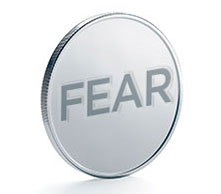
I’ve been requested to address the real fear some of us are experiencing about the pandemic and how to deal with that fear. But as I jotted some early notes, I realized that both sides of that coin need to be considered. On the one hand, many are experiencing immobilizing fear as the pace of infection and deaths accelerate into the holiday season, and that fear needs to be dealt with. On the other hand, there are still too many who are moving about nonchalantly and unafraid who frankly need to be realizing more fear. [PLEASE CLICK ON THE TITLE ABOVE TO CONTINUE READING]
|
First, the immobilizing fear and how to deal with it. When fear is consuming, it is not healthy. Focusing on the uncertainties and confusion that results only heightens the anxiety. We begin to expect the worst. But how can we ease the uncertainty and confusion when our worlds have been turned upside down for 9 months now? What will it take for us to feel unafraid again? Here are some suggested steps for overcoming fear. 1. Fear is a natural and universal human emotion. Acknowledge it. Only then can we really begin to address it, stop hiding from it and actually learn something from it. The alternative is to merely deny or avoid it or temporarily escape from it. And that, too, is not healthy. 2. Through time, uncertainty has proven to be man’s biggest fear. We are encouraged to develop appropriate response mechanisms to the “what will happen when…” thoughts that pop up regularly in our minds. Dwelling on the uncertainties only builds the feelings of fear and anxiety in our bodies. Being aware of these triggers and developing for ourselves a better response than worrying about them is a good start. 3. Once we’ve stopped the incessant thoughts, we can begin to refocus our minds on those things that we actually know or even believe about the situation. The idea here is to get out of the confusion trap and into a place that is knowable. Seeking more information can help us get more comfortable with our future reality. When we look down that tunnel, we want to see information begin to crowd out the uncertainty. 4. Reinforce the steps by reaching out to those who know us and support our position. People who can help us stay focused and keep the uncertainties from creeping back in. People who will catch us when we drift toward idealized, magical thinking as an overreaction. Good listeners and non-judgmental friends are best for this role. And being similarly there for them is also therapeutic for us – the conversation changes away from the confusion. 5. Grounding ourselves with well-loved activities, rituals and routines – seeking things that are familiar and comfortable for us. OK, now for the other side of the coin. We are all aware of those mingling about us who have relaxed their vigilance if they ever had any. Maybe they’re just fatigued, worn-out by it all, lonely, feeling isolated or emboldened by the fact that since they’ve been safe so far they will continue to be, maybe they’re in denial. Maybe they just haven’t seen enough yet to totally get it. A consistent research finding is that even when people see and understand risks, they underestimate the risks to themselves. Experts say that fear appeals can be very effective in this regard, especially showing in a straightforward way what is happening with the virus and what it could mean to any of us if we were to get it. I’m afraid that just because a few vaccines have already been administered those with relaxed vigilance will become even more complacent and nonchalant. Frankly, these people need to be made to feel more afraid for the safety of us all. |